As the distant down-south Waltengu Nar village was slowly recovering from the 2005 tragedy, where over 180 residents were frozen to death by a snowstorm, four families lost six members in a road accident in Shimla. Khalid Bashir Gura accompanied Dr Mushtaq A Marghoob to the village to gather stories of shock, survival, and trauma for consideration by Kashmir’s society and administration.
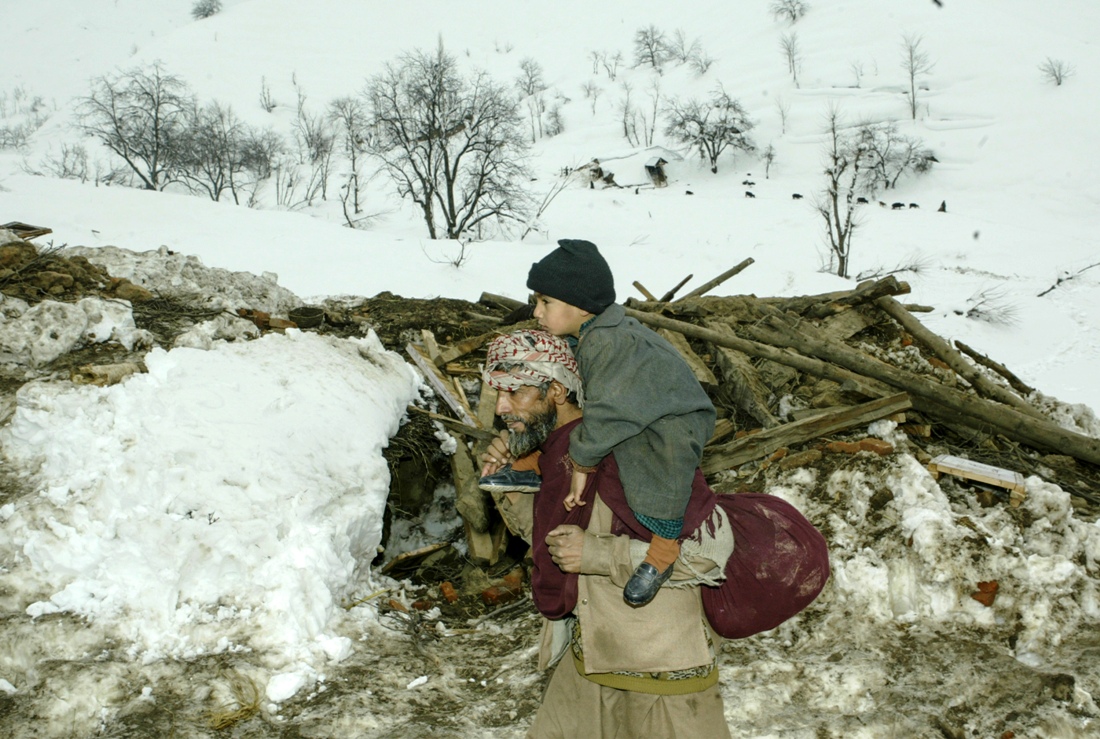
Almost 90 kilometres from Srinagar, down south, wedged between the vast expansive mountains, Waltengu Nar, a Gujjar hamlet in Kulgam is silent and mournful. Qazigund, the highway town is the nearest one, almost 7km away.
On December 4, an avalanche of gloom descended on the village when six body bags of its residents killed in a road accident arrived. The vehicle ferrying 12 occupants; nine from Kashmir, fell into a gorge on the Kadharghat-Jologh road in the Sunni sub-division of Shimla district, killing the six men from Kashmir who were earning their livelihoods as labourers.
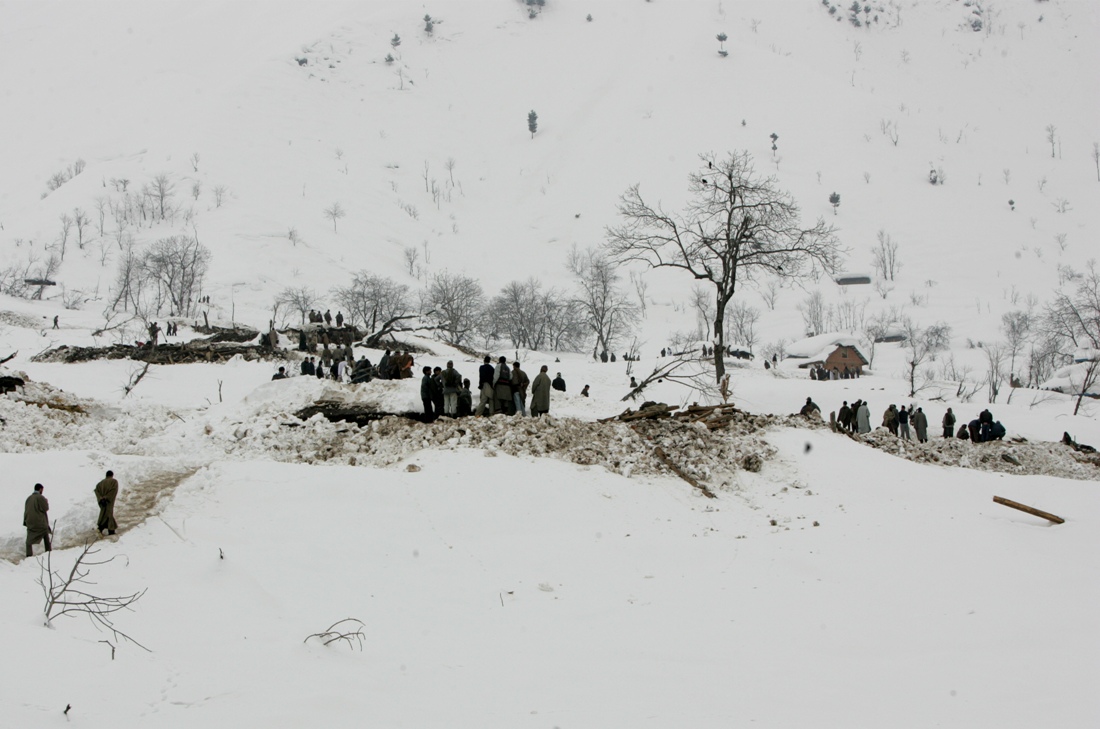
In a rusty winter-brown village, which sits on the mountain’s lap, the mud hutments are scattered around the slope of uneven land. Snaking through the mountains, the graves of six men are fresh as cold winter wind flaps the polythene sheets placed over them. For many residents, these graves haunt them and are grim reminders of the lives they live.
The village wind carries with it the wails of numb widows. The orphans, unmindful of the inevitable burden of familial responsibilities, they will have to shoulder, attempt to kill time in running and hooting. The mother of an unborn orphan is sobbing silently in the corner of the kitchen. The weak old age parents of the deceased with brimmed eyes are yet coming to terms with the loss. They say their back is broken but they accept their fate. There are no options but the tragedy has resuscitated their old wounds.
Survivor Memories
Manzoor Ahmad Tennda, 18, talks impetuously as he is desperate to get back to work. He is a dead man walking – his liver has ruptured, his kidneys are damaged, jaw and head are broken. His priority is to get well soon and resume his routine.
His father, Bashir Ahmad, 60, had to struggle to meet expenses even to travel to Shimla or get his son’s basic medical tests done. The family is in a state of denial about the severity of the damage that the accident inflicted upon them.
“We were travelling in a tarpaulin-covered speedy vehicle. We were shifting to a new place. ,” Manzoor said. “It must have been around 8:30 am when the accident occurred and we were thrown into a deep gorge. We were 12 people in it including nine from Waltengu Nar,” Manzoor remembers reciting the Kalima before losing consciousness. He was located and rescued two hours after the accident.
Four days later, when he regained his senses and reached home, he enquired about the fresh graves en route. His family did not reveal this to him initially.
“I am insomniac,” he said. “I get repeated nightmares of the accident and my heart palpitate too fast.”
After spending Rs 2000, Manzoor underwent all mandatory tests and was discharged for a protracted bed rest before another round of examinations. It is not his state of health but the kitchen penury that dominates his mind.
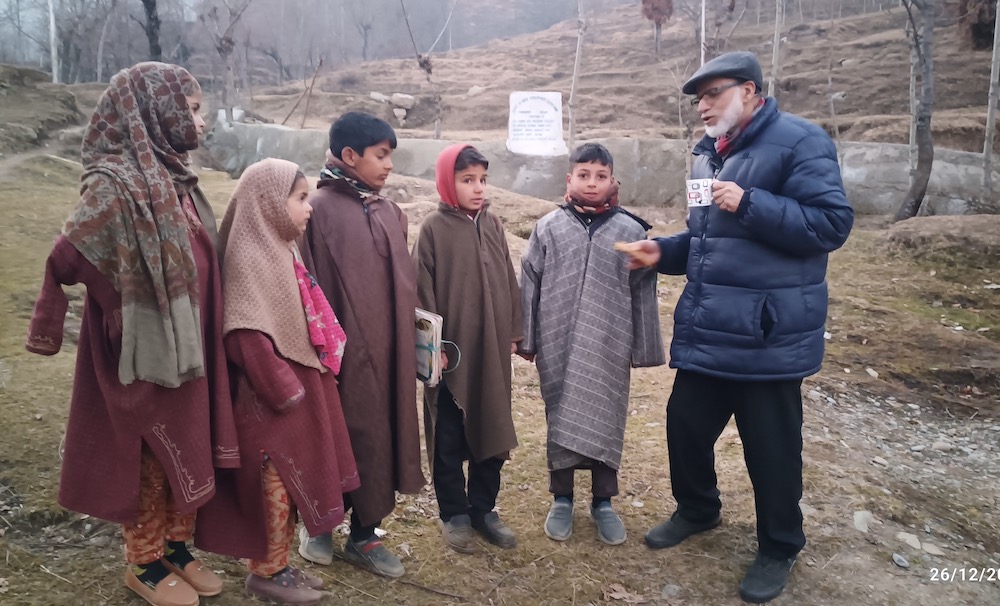
A family of six orphans
Saleema, 40, the wife of Ghulam Hassan Gorsi, 48, is silent, numb in her one-room mud hutment, Katcha Kotha with her six children. Gorsi, the only breadwinner of the 7-member family, was killed in the Shimla accident. Neighbours said God answered his prayers; ‘he wanted to die as he was struggling between sustaining his family and health’. Gorsi has three daughters, the eldest is 16; and three sons, all minors.
On February 19, 2005, around noon, a series of snow avalanches flattened almost two-thirds of the village killing 180 residents, burying under a mountain of snow their livestock and dwellings.
Gorsi also lost his family of eleven including his previous wife; the elder sister of Saleema. He survived because he had migrated to Jammu for work. “Gorsi was a labourer. He had cardiac and backbone issues which had rendered him incapable of doing any physical work,” said his neighbour, Muhammad Shafi. “As he was the only earning hand in the family, the villagers collectively supported him.”
Saleema has no source of income. To keep the home-hearth going, her elder son, Ishfaq, 14, may have to shoulder the family responsibilities. With their father dead in Shimla, only two options are left: Either his mother has to beg to support the six orphans or young Ishfaq has to shoulder the responsibility.
It is not bread alone, even shelter is an issue. Saleema has to take her orphaned family downhill to save them from meeting the fate of 2005. The family is amongst few who were not rehabilitated. Gorsoo’s family is among 44 families out of 120 who are yet to be rehabilitated almost 19 years after the old village was erased by snow. The hutments are at different stages of completion and will come up with an estimated cost of 2.49 crore, officials said.
As male family members of other deceased have left for Shimla to meet official procedures and prerequisites for compensation, Saleema couldn’t. She continues to be silent while simultaneously dealing with the tantrums thrown up by her eighteen-month daughter, Rafiya.
Lost Husband and Brother
Foola Jan, 28, is mourning the loss of her two supports – husband, Mushtaq Ahmad, 30, and brother, Shabir Ahmad, 19. The lack of basics compelled them to work in Shimla. Numb with grief, her brother-in-law, Fayaz Ahmed, said she is already suffering from an ailment.
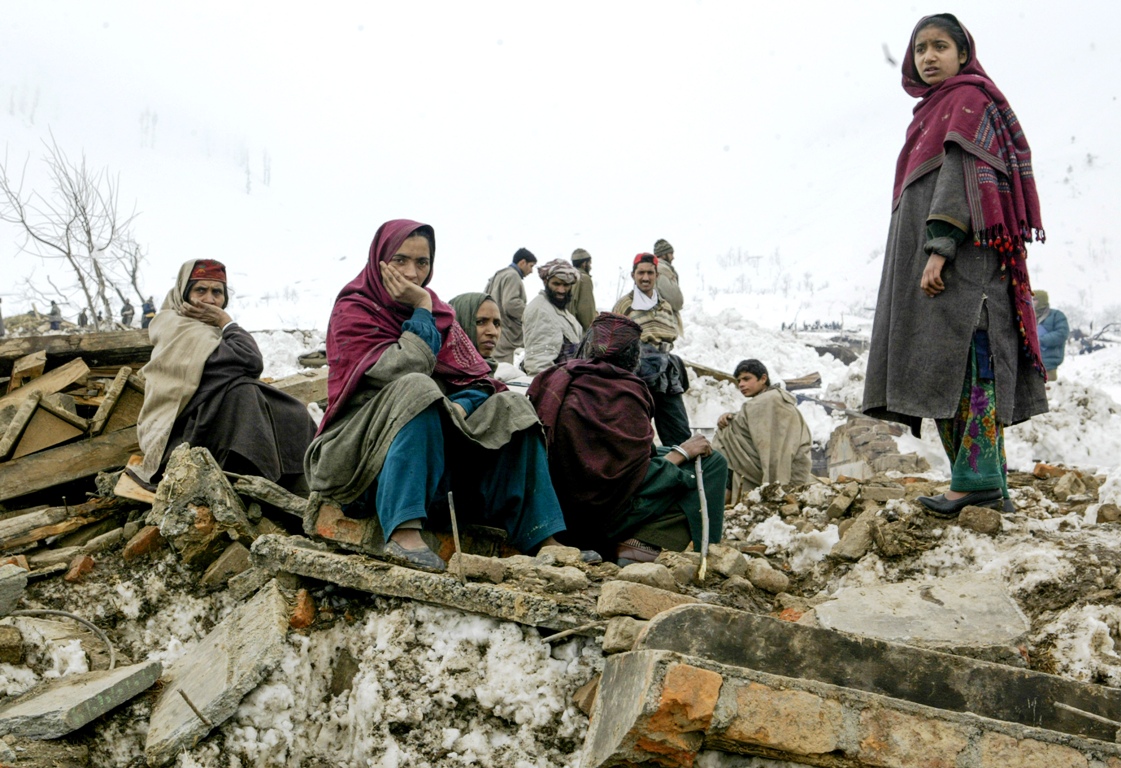
In less than a month, a mourning young widow travelled to Shimla in the hope of getting some compensation for three orphan kids, the eldest being nine. Foola lacks a source of income. Mushtaq constructed his single-room home this year and debts are yet to be repaid.
“How will this woman with three young kids feed and no source of support clear debts and simultaneously feed the orphans,” Mushtaq said, insisting he has concerns but he has his own family to feed.
Mushtaq’s family had lost their uncle, elder son to a 2005 snowstorm another young son to a disease and now another one to accident. The village, elders said witnesses people dying young leaving behind orphans, widows and old age parents.
For Foola, even travel to Shimla was another debt. Tragic, Mushtaq lost his sister’s son, Talib, in the accident. Of the six fresh-dug graves, three are theirs.
Shabir Ahmad, 19, had just passed his class twelfth. The family is inconsolable. They lost a teenage son and a young son-in-law. His father, Bashir Ahmad is disillusioned with the administrative quagmire as he alleges they are subjected to a life over dangerous slopes.
Shabir was a lone breadwinner, studying as well as earning. He had gone to work to repay the debts that were raised when his sister was married. “Now, as he is gone, he has a young brother, sisters and old age parents with no one to take care of them,” his relative said.
Elderly Burden
Talib Hussain Tinda, 21, unmarried, was the eldest in a family of six. Living in a mud hutment with a room exclusively for use as a cowshed, he was supporting his younger four siblings and aged parents.
“He has been going to Shimla for four years to work as a labourer,” his brother Bilal Hussain, 15, said. Hussain had left studies to support the family. Now it is Bilal’s turn to drop out and get into his dead brother’s shoes. “I had never expected that my brother would meet this fate. I am scared to leave my parents. We are devastated.”

Theirs are among the families deprived of any safe shelter. When it snows, as a part of the rescue ritual the family shifts downhill to government buildings for some days. “We keep shifting like shepherds as sometimes we have to pay rent also or work for other people in exchange for space,” Bilal said. “I have to shoulder the family responsibilities.”
The family of Gulzar Ahmad, 30, is yet to come to terms with the loss of their son. His cardiac-unwell father, Bashir Ahmad, 60, had no option but to visit Shimla with others for mandatory document submission.
Living in a hutment, he had aged parents, and a younger teenage brother to feed. According to his elder brother, Manzoor Ahmad, their father was averse to his kids going to dangerous places for work, unlike Srinagar. But off late, work had dried up, especially in winters in the homeland forcing migration.
“Gulzar’s wife had last year given birth to twin daughters, however, the daughters couldn’t survive. Gulzar was yet to come to terms with the grief of family loss and he left for Shimla first time for work,” he said as he was the breadwinner of the family as Manzoor lives separately. In the 2005 snowstorm, the entire family of four people of Gulzar’s uncle perished.
Unborn Orphan
A week ago, Fareed Ahmed, 23, had embarked on a journey with other friends far away from home. He was a bridegroom of six months and was nourishing dreams of family life. His wife, Zarina, 18, is now pregnant with his child. As she is at her in-laws, she sits in the corner of the kitchen poignantly, silent with two siblings and the mother of Fareed.
After finishing her class ninth she was married and the young couple were happy. When the news of her husband’s accident reached her, she according to his brother-in-law, Mukhtar Ahmad, 26, became numb at the sudden catastrophe.
“Our father; Gul Muhammad Deeded’s back is broken. He had braved the 2005 February snow avalanches and managed to save his family. He carried little Farred on his shoulders. He is old now and even his health has rendered him incapable of any work. We brothers will never allow him to work. After nineteen years when Fareed grew up to support his parents in old age, his father’s fragile shoulders had to lift his heavy coffin,” Mukhtar said. “Now I have to shoulder the responsibilities alone. Earlier we brothers would share joys and sorrows besides financial burden.”
The Contractor
Noor Muhammad, 33, takes the workers to Shimla where he operates as a contractor He has been going to Shimla for more than a decade.
Noor said each year more than two dozen youths travel with him in search of some earnings to get their families out of poverty rigmarole. “The government also abandoned us as we live at a place which is vulnerable to weather vagaries, especially snow avalanches,” Noor alleged. “Most of us would escape to save ourselves from meeting the fate like February 2005 during snowfall. Also, many used to meet the expenses of the family and their studies as well.”
The youth had dreams of buying land; building houses at safe and secure locations and living a settled life. Even though the government had promised a housing colony but since 2005, only 76 houses have been completed as the processes of rehabilitation suffered inordinate delays. “The government made us hopeless while promising hopes.”
At Shimla, they would earn handsomely. “We earn Rs 700 to Rs 1200 a day,” he said. “We were 16 people out of which six died and three were injured and the rest went back to work.”
Nomadic Life
Noor said as their life has turned nomadic, it disrupts their education most. “As it is a hilly area, avalanches are inevitable, so people avoid building houses,” Noor said. “The government built a colony at a place which is also not well located. Downhill, where avalanches cannot reach, the land is unaffordable for us.”
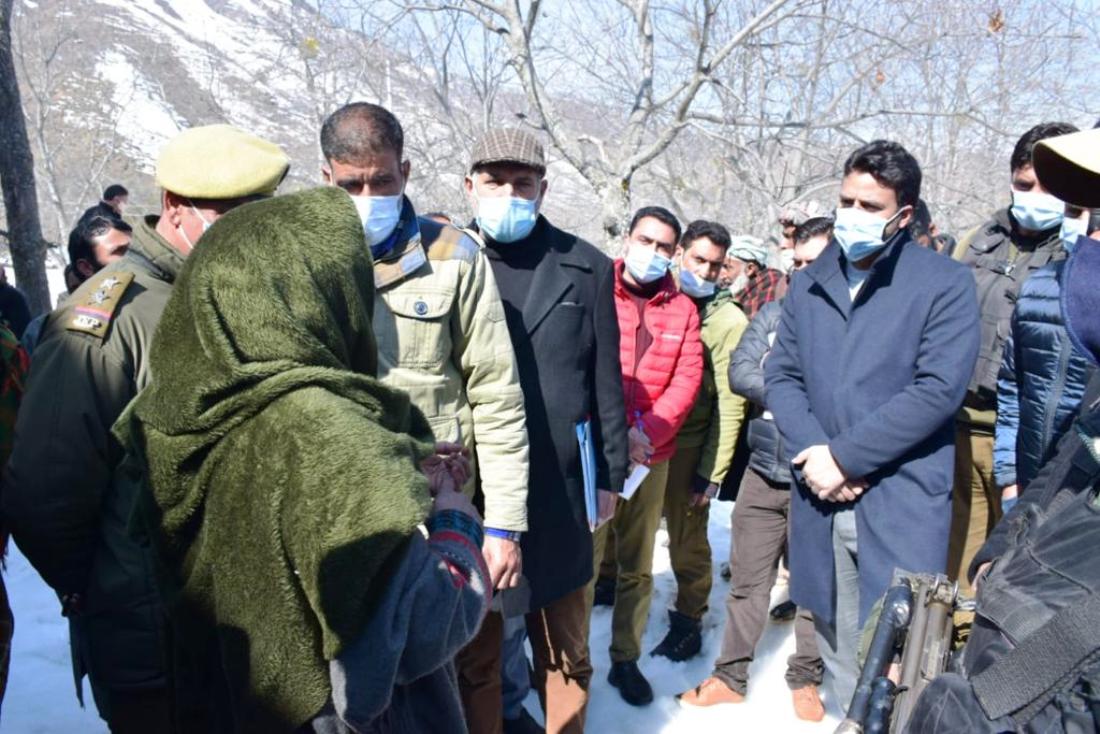
Each year, like many, Talib’s family who have no government hutment downhill, have no safe shelter. They spend some months downhill in economically better-off families to work and live as tenants.
In the Wasaknag colony, 30 hutments have been constructed; in the Nabook colony, 35 huts have been constructed. After the 2005 avalanche, around 80 families are living in these hutments. Since then, as population and family size grew and nuclear families started evolving, the search for safe and secure land and houses continued.
The families who are yet to be rehabilitated suffer each year including those of the colonies. “The government seem to have misplaced priorities,” the villager alleged, as there is no economic, or education, activity as we remain abandoned.
Each year, as a part of the rescue ritual during snowfall there is displacement. “We have to leave our homes and are subjected to harsh processes of migrating from one place to another. Even during government rescue operations, when most of us take shelter in public buildings downhill, there are just a couple of blankets to cushion on,” the villagers said as the population is already socio-topographically isolated and economically susceptible.
Initially, funds were reallocated for the relocation and rehabilitation of 2005 snowstorm victims on government-owned land at a much safer central place of Kansloo. For unknown reasons, the plan was abandoned.
“We have been subjected to repeated traumas each year. Earlier before 2005, we used to live in mud hutments which most of the time helped us navigate avalanche threats. The families used to hoard stock for months,” said Noor Muhammad, a February 2005 survivor and a specially-abled who runs his own business. He remembers how for months after being buried under snow, the process of digging out frozen corpses continued.
Due to changing architecture, we have become more susceptible. Most families became labourers as quite a few owned livestock.
State of Education
“The standard of education and teachers are not good due to lack of accountability,” locals alleged.
The children’s education is impacted because they are not settled in one place, according to Master Bashir Ahmad. There is no private school in Nard.
The Waltengo village has a population of 2422 of which 1261 are males while 1161 are females. In 2011, the literacy rate of Waltengo village was 48.14 per cent compared to 67.16 per cent in Jammu and Kashmir.
There are two schools in the area; primary and middle. There is also one health centre. Even though people are mainly related to agriculture and livestock, it lacks centres. The government, according to locals, have developed roads, ensured solar lights and some developmental work and investment is brought to the area. Similarly, the local administration has ensured afforestation in higher reaches to avert avalanche-like tragedies.
Many students who study in these government schools lack the teachers’ guidance and support at home. Mere enrolment in schools is no education. “Even after passing many classes, many of us cannot even write our name,” Gulzar, a resident, said. A labourer, Gulzar dreams of empowering his kids with education, got his kids out of government school and enrolled them in a private school after raising debt.
“As I admitted them in the private school, the daily expenses began to increase and take a toll on me. It was getting difficult to meet their fees. I could not consistently pay as my wife’s health also deteriorated and ultimately I had to drop them out,” Gulzar said. The snow tsunami scare forced him to leave home to earn a dream to build a house in at safe and secure location. “I have lost many in the past and I don’t want to lose my family now. I have no heart for it. I live in a tenement with my family.”
Gulzar said many people migrated out. “Even when it rains or snow falls I get scared. When snow avalanche came in 2005, I survived in a hutment that buried 36 dead bodies,” he said.
On the flip side, when supported and cared for, many students have been adopted by the NGOs and admitted to private schools in Srinagar. Their destiny according to locals changed. A boy who was turned down by many private schools for lack of basic understanding is now preparing for NEET exams and is inspiring others towards higher education.
A Two Decade Association
Professor Mushtaq A Marghoob, the former head of Government Medical College, Srinagar’s Psychiatry Department and an expert on humanitarian emergencies, has been visiting the community since 2005.
When the snowstorm buried the village, the society responded. After an initial few months, the public interest faded and the survivors’ real crisis started, Marghoob, who has documented the psychological trauma of the area said.
Post-disaster, living bereft and impoverished in itself has been no less traumatising given unfulfilled promises, deplorable living conditions in small tents even in freezing temperatures, uncertainty about the safety of self and a sense of helplessness regarding the current happenings. His real challenge is that the trauma in places like Waltengu Nar is getting generational shift by recurrent tragedies.
Psychiatric morbidity in disaster victims is as prevalent and persistent here, as elsewhere in the world, with PTSD forming the predominant diagnosis, Marghoob said. “The mere presence of cloud or drizzle sends fears down the spine of these people.”
Aiding Coping
The family members who have lost their members in recent accents term it as a fate. “Spiritual help from faith healers, clergy and respected elders of the community was of immense help in helping survivors to come to terms and live down the trauma,” Marghoob said. “Spirituality is a strong tool to reinforce resilience among the survivors and cope with various difficulties through the course of trauma.”
The importance of psycho-social consequences needs to be recognised at the earliest to develop appropriate policy with a relevant plan of action and integrate it into the overall disaster management strategy to meet the mental health needs of the disaster-affected population. The survivors of such communities have high suicidal tendencies where they are triggered by the past for such high risk-taking behaviour. “This continuous suffering is an outcome of entire society’s institutions failure,” he said.















